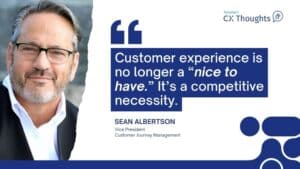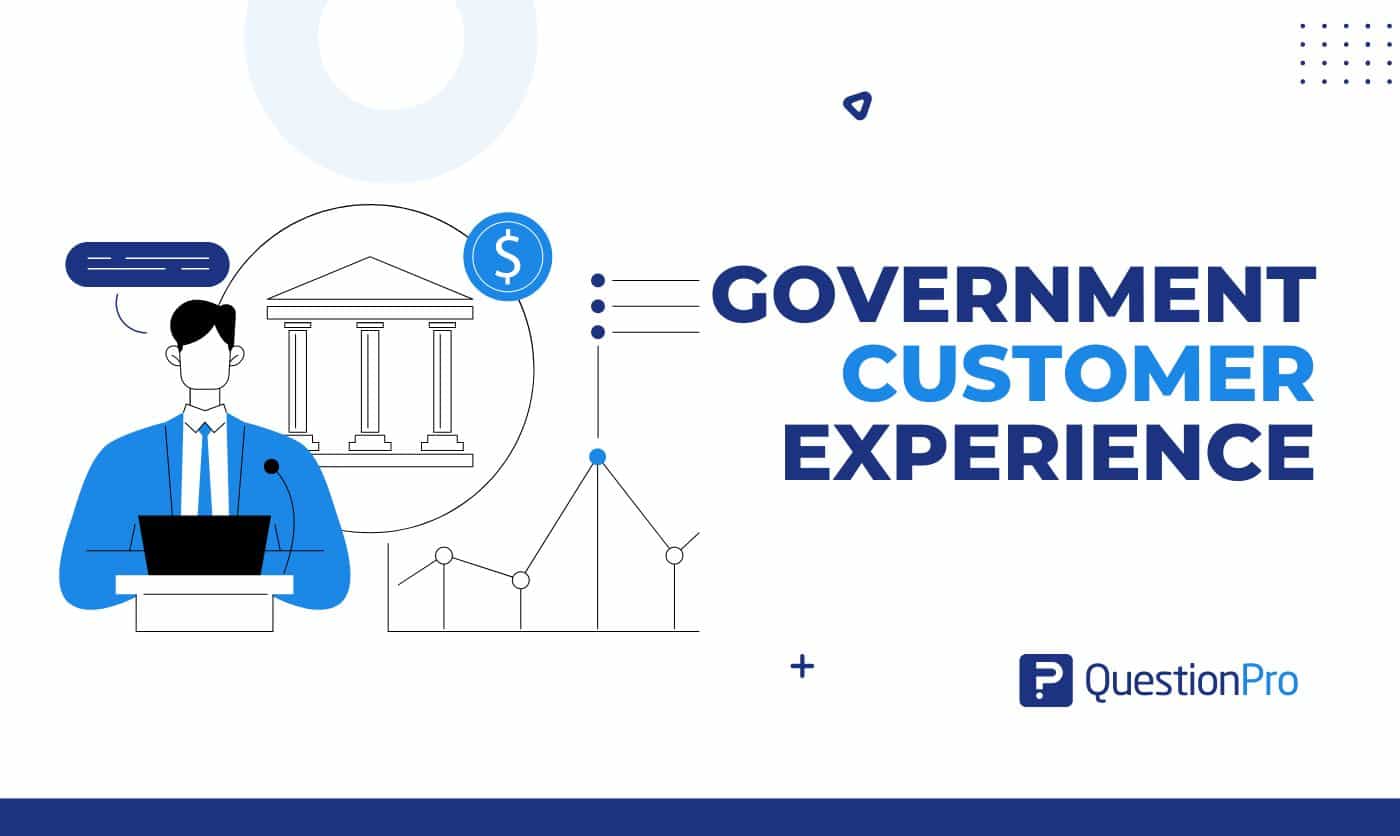
The concept of government customer experience transcends mere transactional interactions; it embodies the essence of citizen-centric governance. As citizens evolve into discerning consumers of public services, their expectations for seamless, user-friendly experiences mirror those of the private sector.
The impact of government customer experience extends beyond user satisfaction; it directly influences the efficacy and credibility of government services. A positive customer experience fosters trust in public institutions, enhances citizen engagement, and strengthens the social contract between governments and the people they serve.
The essential components of government customer experience are:
- Accessibility.
- Ease of use.
- Responsiveness.
- Transparency.
- Personalized service delivery.
What is Government Customer Experience?
Government customer experience refers to the quality of interactions and services government agencies and institutions provide to citizens. It encompasses all touchpoints and interactions between citizens and the government, whether online, in-person, or other channels.
Government customer experience aims to ensure citizens receive efficient, effective, and user-friendly digital services that meet their needs and expectations. Governments enhance customer experience through:
- Implementing user-centered design principles.
- Leveraging technology for streamlined processes.
- Prioritizing citizen feedback and engagement.
Essential components of government customer experience include accessibility, ease of use, responsiveness, transparency, and personalized service delivery. Governments strive to enhance customer experience by implementing user-centered design principles, leveraging technology to streamline processes, and prioritizing citizen feedback and engagement.
Government customer experience initiatives aim to improve customer satisfaction, trust in public institutions, and the overall efficiency and effectiveness of government federal services. By focusing on citizens’ needs and preferences, governments can better fulfill their responsibilities and foster stronger relationships with the people they serve.
Types of Government Customer Experience
Government customer experience can manifest in various forms, catering to different aspects of citizen interaction with public services. Here are several types of Government CX:
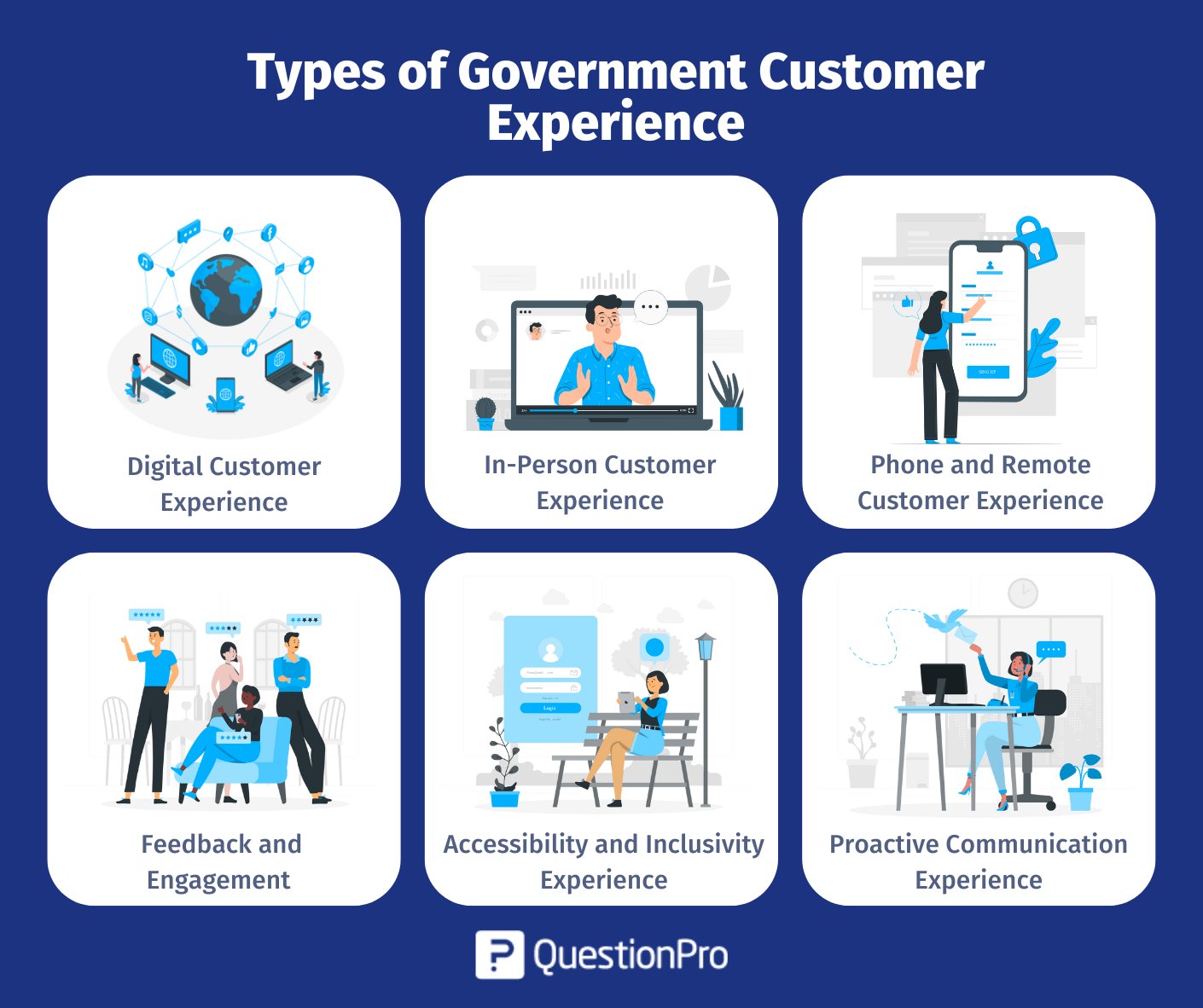
1. Digital Customer Experience
Lets talk about digital customer experience:
- This type of interaction focuses on online interactions between citizens and government agencies.
- It encompasses user interfaces of government websites, mobile apps, and online portals.
- Examples include tax filing, permit applications, and accessing government information or resources.
2. In-Person Customer Experience
Citizens interact in person when they visit government offices and service centers or participate in public events. Providing a welcoming, efficient, and accessible environment at government offices is crucial for this customer experience.
3. Phone and Remote Customer Experience
This type involves interactions with federal agencies over the phone or through remote communication channels such as email or chat support. It includes services like helplines, customer support, and remote assistance for queries, complaints, or requests.
4. Feedback and Engagement Experience
This type focuses on soliciting and responding to citizen feedback, suggestions, and complaints about federal government services. It includes mechanisms for citizen engagement such as surveys, public consultations, town hall meetings, and online feedback forms, as well as the responsiveness of federal agencies to citizen input.
5. Accessibility and Inclusivity Experience
Accessibility and inclusivity experiences:
- Ensuring government services are accessible to all citizens, regardless of abilities, language, or socioeconomic status.
- Providing accommodations for people with disabilities to facilitate accessibility.
- Offering services in different languages to cater to linguistic diversity.
- Addressing the specific needs of marginalized or underserved communities.
6. Proactive Communication Experience
Proactive communication involves informing citizens about government policies, programs, and services through timely and relevant communication channels. It includes notifications, alerts, newsletters, and educational campaigns to increase awareness and understanding of government initiatives.
By managing these different types of federal customer experience, public sector organizations can create a more citizen-centric approach to improve service delivery, enhancing customer satisfaction, trust, and engagement with government services.
Key Elements of Government Customer Experience
The key elements of government customer experience revolve around creating seamless, efficient, and citizen-centric interactions across various touchpoints of public service delivery. These elements include:
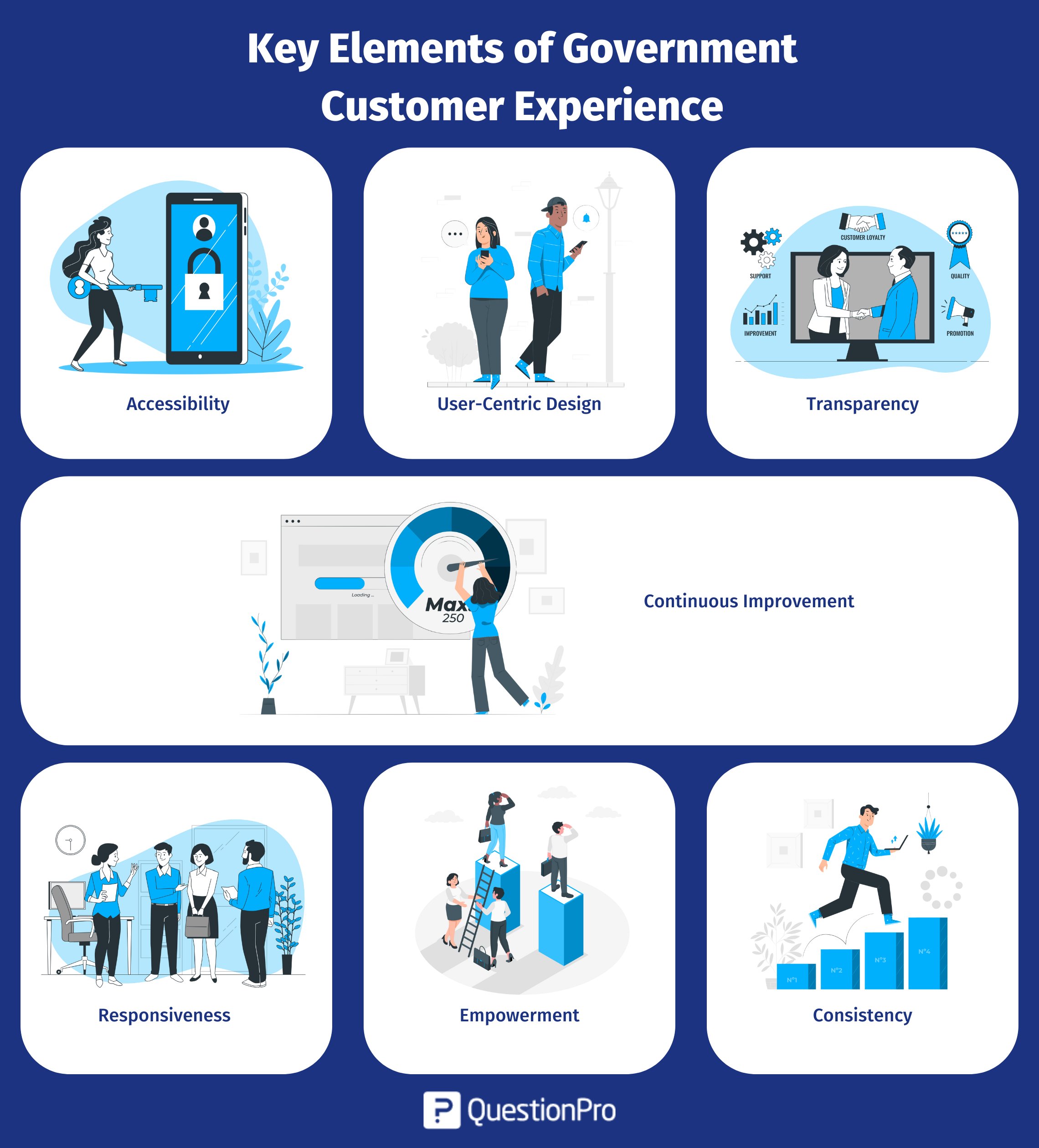
- Accessibility: Ensuring that government services are accessible to all citizens, regardless of physical location, language, ability, or socio-economic status. It involves providing multiple channels for interaction, including online platforms, in-person service centers, and telephone support.
- User-Centric Design: Designing government services with the needs and preferences of citizens in mind. It includes intuitive user interfaces, clear communication, and personalized interactions that anticipate and address citizen expectations.
- Transparency: Providing clear and transparent information about government processes, policies, and service offerings. Transparency builds trust and confidence among citizens by fostering accountability and enabling informed decision-making.
- Responsiveness: Responding to citizen inquiries, feedback, and requests promptly and efficiently. It involves acknowledging citizen concerns, providing updates on the status of requests, and resolving issues promptly.
- Empowerment: Empowering citizens to engage with government services and participate in decision-making processes actively. It may involve providing opportunities for citizen feedback, involving citizens in co-designing services, and offering resources to help citizens navigate government systems effectively.
- Consistency: Maintaining consistency in service delivery across different channels and interactions. Consistency ensures that citizens receive the same service quality and experience regardless of how they interact with the government.
- Continuous Improvement: Continuously monitoring and evaluating government services’ effectiveness to identify improvement areas. It involves gathering citizen feedback, analyzing performance metrics, and iteratively improving service delivery processes to meet citizen needs and expectations better.
By focusing on these key elements, federal agencies can create customer-centric experiences prioritizing citizen needs, enhancing overall satisfaction, and building trust and confidence in public services.
Importance of Government Customer Experience
The importance of government customer experience cannot be overstated in today’s interconnected and service-oriented society.
Here are several key reasons why it holds significant value:
1. Citizen-Centric Governance
Government CX places citizens at the center of public service delivery, recognizing their needs, preferences, and expectations. Governments demonstrate a commitment to responsive and accountable governance by prioritizing citizen satisfaction and convenience.
2. Enhanced Trust and Confidence
Positive customer experiences build trust and confidence in government institutions. When citizens receive efficient, transparent, personalized services, they are more likely to view the government as competent, reliable, and responsive to their needs.
3. Increased Engagement and Participation
- A seamless and secure customer experience fosters citizen engagement and participation in civic processes.
- Easy access to information lets citizens stay informed about government services and policies.
- Providing channels for customer feedback encourages active participation and involvement in public affairs.
- Simplified interactions with government services enhance convenience and encourage frequent engagement.
- Secure digital platforms build trust and confidence among citizens, facilitating smoother interactions with decision-making processes.
4. Improved Service Delivery
Federal customer experience initiatives often lead to streamlined processes, reduced bureaucracy, and enhanced service efficiency. Governments can identify and address inefficiencies by focusing on user needs and preferences, resulting in better service delivery and resource allocation.
5. Adaptation to Technological Trends
- Embrace customer journey principles to meet evolving citizen needs.
- Use technology to modernize government service delivery.
- Stay updated on digital trends to remain relevant.
Government customer experience is essential for fostering citizen trust, engagement, and satisfaction, leading to more effective and accountable governance. By prioritizing citizens’ needs and delivering exceptional service experiences, governments can build stronger connections with the people they serve and create a more inclusive and responsive society.
How QuestionPro Can Improve Government CX
QuestionPro CX, as a versatile survey and feedback platform, can play a significant role in enhancing government customer experience in several ways:
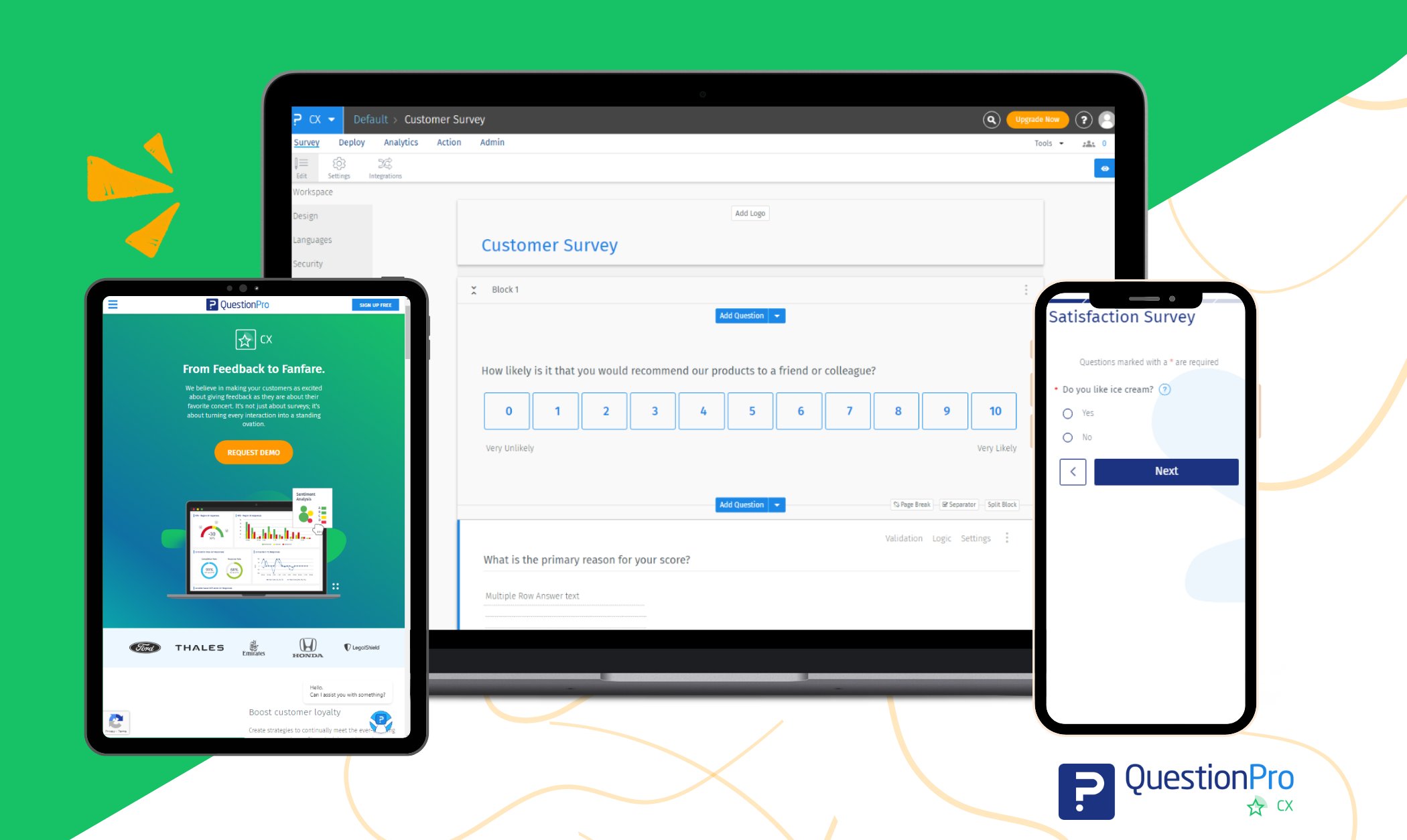
1. Gathering Citizen Feedback
QuestionPro enables government agencies to collect feedback from citizens regarding their experiences with various public services. Governments can gain valuable insights into citizen needs, preferences, and pain points by designing surveys tailored to specific interactions or programs.
2. Enhancing Accessibility
QuestionPro offers multilingual survey capabilities, making it easier for multiple agencies to reach diverse populations and gather feedback from citizens with different language preferences. It enhances inclusivity and ensures that all citizens can provide input on government services.
3. Streamlining Feedback Processes
With QuestionPro’s automated survey distribution and response collection features, government agencies can streamline the feedback collection process. It allows for more efficient data collection, analysis, and action planning, leading to quicker responses to citizen feedback.
4. Promoting Transparency and Accountability
QuestionPro to promote transparency and accoutability:
- Federal government agencies can demonstrate transparency and accountability by publicly sharing QuestionPro survey results and action plans derived from citizen feedback.
- QuestionPro’s reporting and data visualization tools facilitate the creation of transparent and accessible reports for stakeholders, enhancing visibility into improvement efforts.
5. Engaging Citizens in Decision-Making
QuestionPro’s interactive survey features, such as polls and quizzes, can be used by government agencies to engage citizens in decision-making. By soliciting input on policy initiatives, program designs, or service improvements, governments can foster a sense of ownership and participation among citizens.
6. Iterative Improvement
QuestionPro helps to support:
- Iterative improvement cycles by enabling government agencies to conduct regular pulse surveys.
- Facilitates tracking changes in customer satisfaction over time.
- The platform allows for continuous monitoring of customer experience trends.
- Supports ongoing refinement of services based on evolving citizen needs and expectations.
QuestionPro can empower government agencies to proactively listen to citizens, measure the effectiveness of their services, and make data-driven decisions to improve federal customer experience effectively.
Conclusion
Government customer experience stands as a cornerstone of modern governance, embodying the commitment of public institutions to prioritize citizen needs, enhance federal service delivery, and foster trust in democratic processes.
As digital connectivity reshapes interactions between citizens and governments, the imperative to provide seamless, user-centric experiences has never been more pressing.
By embracing principles of accessibility, responsiveness, and transparency, governments can create environments where citizens feel valued, empowered, and engaged. The significance of Government CX extends far beyond mere satisfaction metrics.
In essence, government customer experience embodies democratic governance, where citizens’ voices and experiences serve as guiding beacons for policy-making and service delivery. As governments navigate the complexities of the modern world, prioritizing citizens’ needs and aspirations will remain paramount, driving progress, accountability, and, ultimately, a more equitable and resilient society.
Customer Experience (CX) in government refers to applying customer experience principles to public sector services.
The key elements of Government Customer Experience (CX) involve several factors aimed at improving how citizens interact with government services. Here are the key elements:
1. Accessibility
2. User-Centric Design
3. Transparency
4. Responsiveness
5. Empowerment
6. Consistency
7. Continuous Improvement






